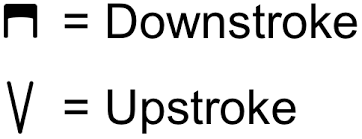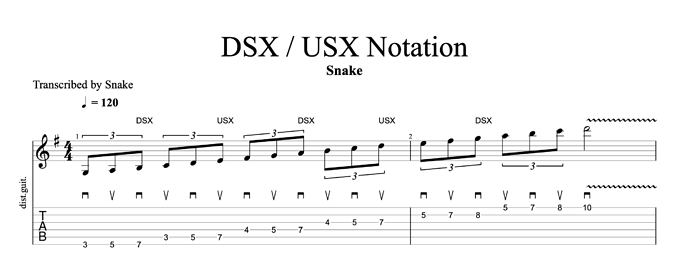This should already be clear from the pickstroke notation. If for some reason you want a reminder, you could just notate “USX” above the staff which would be a lot clearer than symbols on every note.
If you find yourself wanting to notate “DSX” for three notes, then “USX” for a five notes, then “DSX” again, that’s almost certainly incorrect — the phrase should probably not be played with either of those techniques. It should probably be played with a mixed escape technique.
Also, if someone is trying to play something they previously wrote by focusing on which notes are supposed to be trapped or escaped, that’s also probably not going to work.
Conversely, if someone can play a line like Example A, that player cannot typically tell which escape they are making for which notes. They just know the line sounds clean. They will not generally know if a note is escaped or trapped, or if it’s escaped, which type of escape that is, single or double.
Finally, if you film different players trying to play something like Example A and watch them up close in slow motion, you will see all sorts of weird combinations — some notes may be escaped, others may not. Some notes may be single escape others may be double. The same player doing the same line multiple times will even produce different results. A lot of Olli Soikkeli licks look like this. Mystery escape. There would be almost no point in us trying to notate what he does because he can’t even play things the same way twice.
There’s really no practical scenario I can think of where trying to notate the escape of individual notes helps someone play the line, or helps someone learn to do a picking technique. General hints above the staff for whole pieces or whole phrases, sure, why not.
And now I must apologize, I don’t mean to harp on this! I just think it’s a deceptively important question because it dovetails with lots of everyday problems people have learning technique that go beyond notation.





